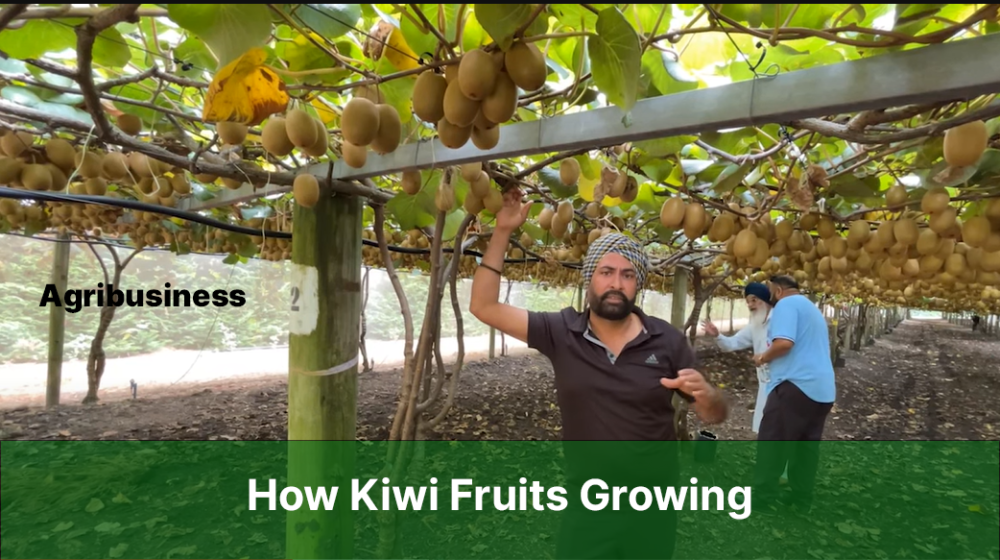How Kiwi Fruits Growing, Taste of Red Kiwi, Kiwi Plantation Timing in Pakistan, Kiwi Farming Best Timing in the USA
Kiwi fruits, also known as Chinese gooseberries, are a popular fruit known for their unique taste and high nutritional value. This article explores the cultivation of kiwi fruits, the taste of red kiwi, and the best plantation timing for kiwi farming in Pakistan and the USA.
Kiwi Fruit Cultivation
Kiwi fruit cultivation requires specific conditions to thrive. These fruits grow best in temperate climates with well-drained soil and ample sunlight. The vines are usually trained on trellises or support systems to allow proper growth and easy harvesting.
The cultivation process involves preparing the soil, selecting suitable kiwi varieties, planting the vines, providing proper irrigation, and managing pests and diseases. It’s important to note that kiwi plants are dioecious, meaning that male and female plants are required for pollination and fruit production.
Taste of Red Kiwi
Red kiwi, also known as the red-fleshed kiwi or the kiwiberry, is a variation of the traditional green kiwi fruit. It has a distinctive red or reddish-brown flesh, which sets it apart from the green variety. The taste of red kiwi is often described as sweeter and more intense compared to the green kiwi.
The flavor profile of red kiwi includes a combination of sweetness, tartness, and tropical undertones. Its unique taste makes it a favorite among fruit enthusiasts who appreciate its vibrant color and refreshing flavor.
Kiwi Plantation Timing in Pakistan
In Pakistan, the ideal time for kiwi plantation depends on the specific region and climate. Generally, kiwi plants are planted during the spring season when the soil has warmed up and the risk of frost has passed. The exact timing may vary slightly, but it typically falls between March and May.
It’s crucial to select kiwi varieties that are suitable for the local climate and consider factors such as chilling hours required for proper fruit development. Adequate water supply, proper training and pruning, and pest and disease management are essential for successful kiwi cultivation in Pakistan.
Kiwi Farming Best Timing in the USA
In the USA, the best timing for kiwi farming varies depending on the region and climate zone. Kiwi plants thrive in regions with long, warm summers and cool winters. In general, the recommended planting time is in early spring, around March or April, when the risk of frost has passed.
For optimal fruit production, it’s important to select kiwi varieties that are adapted to the specific climatic conditions of the region. In colder regions, it’s essential to choose hardy kiwi varieties that can withstand freezing temperatures. Proper care, including pruning, trellising, and providing sufficient water and sunlight, is necessary throughout the growing season.
Kiwi fruits are a delicious and nutritious addition to any fruit garden or farm. Whether it’s the traditional green kiwi or the vibrant red kiwi, these fruits offer a unique taste experience. Understanding the proper plantation timing for kiwi farming in different regions, such as Pakistan and the USA, is essential for successful cultivation. By providing the right growing conditions and care, farmers can enjoy a bountiful harvest of flavorful kiwi fruits.
FAQs
FAQ 1: How long does it take for kiwi fruits to mature?
The time taken for kiwi fruits to mature can vary depending on the variety and growing conditions. Generally, it takes about 3 to 5 years for kiwi vines to reach maturity and start producing fruits.
FAQ 2: What are the key factors for successful kiwi farming?
Successful kiwi farming relies on various factors, including suitable climate and soil conditions, proper plantation timing, selection of appropriate kiwi varieties, regular irrigation, pest and disease management, and proper training and pruning of the vines.
FAQ 3: Can kiwi plants withstand cold climates?
Certain kiwi varieties, particularly hardy kiwi varieties, are more tolerant of cold climates and can withstand freezing temperatures. These varieties are better suited for regions with colder winters.
FAQ 4: How can I ensure good pollination for my kiwi plants?
To ensure good pollination, it’s important to have both male and female kiwi plants in the orchard. Female plants produce the fruits, while male plants provide the pollen required for pollination. It’s recommended to have one male plant for every 8 to 10 female plants.
FAQ 5: What are the common pests and diseases that affect kiwi plants?
Common pests that can affect kiwi plants include aphids, mites, scale insects, and thrips. Diseases such as bacterial canker, powdery mildew, and root rot can also pose challenges. Proper pest and disease management, including regular monitoring and appropriate treatment, are crucial for maintaining healthy kiwi plants.
